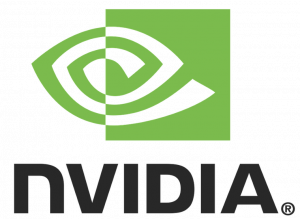How To Install Nvidia Drivers on AlmaLinux 9

In this tutorial, we will show you how to install Nvidia Drivers on AlmaLinux 9. For those of you who didn’t know, the Nvidia driver is needed by your NVIDIA Graphics GPU to function with better performance. Some Linux distributions offer the proprietary driver pre-packaged as part of its standard package repository making the entire Nvidia Linux Driver procedure extremely easy to follow.
This article assumes you have at least basic knowledge of Linux, know how to use the shell, and most importantly, you host your site on your own VPS. The installation is quite simple and assumes you are running in the root account, if not you may need to add ‘sudo‘ to the commands to get root privileges. I will show you the step-by-step installation of the Nvidia Drivers on AlmaLinux 9. You can follow the same instructions for CentOS and Rocky Linux.
Prerequisites
- A server running one of the following operating systems: AlmaLinux 9.
- It’s recommended that you use a fresh OS install to prevent any potential issues.
- SSH access to the server (or just open Terminal if you’re on a desktop).
- A
non-root sudo useror access to theroot user. We recommend acting as anon-root sudo user, however, as you can harm your system if you’re not careful when acting as the root.
Install Nvidia Drivers on AlmaLinux 9
Step 1. First, let’s start by ensuring your system is up-to-date.
sudo dnf makecache --refresh sudo dnf groupinstall "Development Tools"
Step 2. Installing EPEL and RPM Fusion Repository.
Run the following command below to install and enable the EPEL repository:
sudo dnf install https://dl.fedoraproject.org/pub/epel/epel-release-latest-9.noarch.rpm sudo dnf install https://dl.fedoraproject.org/pub/epel/epel-next-release-latest-9.noarch.rpm
Then, import RPM Fusion using the following command below:
sudo dnf install --nogpgcheck https://mirrors.rpmfusion.org/free/el/rpmfusion-free-release-$(rpm -E %rhel).noarch.rpm sudo dnf install https://mirrors.rpmfusion.org/nonfree/el/rpmfusion-nonfree-release-$(rpm -E %rhel).noarch.rpm
After that, Enable the RPM Fusion Repository:
sudo dnf config-manager --set-enabled rpmfusion-free-updates-testing sudo dnf config-manager --set-enabled rpmfusion-nonfree-updates-testing
Step 3. Installing Nvidia Drivers on AlmaLinux 9.
By default, Nvidia Drivers is not available on the AlmaLinux 9 base repository. Simply install the Nvidia Drivers package by using the dnf command:
sudo dnf install akmod-nvidia
In addition, install the CUDA driver support using the following command below:
sudo dnf install xorg-x11-drv-nvidia-cuda
Finally, reboot your system. The Nvidia driver should now be installed on your AlamLinux 9 Desktop:
reboot
Step 4. Accessing Nvidia Driver on AlmaLinux 9.
Once the installation is completed, open the Nvidia Driver setting on your system by using the application search bar. Click on ‘Activities’ and then type ‘NVIDIA X Server’ in the application search box or by executing the following command:
nvidia-settings
Also, verify the installation worked by running the following command below:
nvidia-smi
Congratulations! You have successfully installed Nvidia Drivers. Thanks for using this tutorial for installing Nvidia Drivers on your AlmaLinux 9 system. For additional help or useful information, we recommend you check the official Nvidia website.